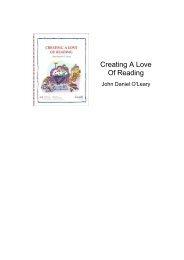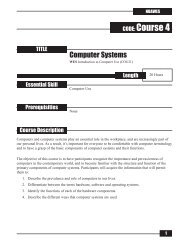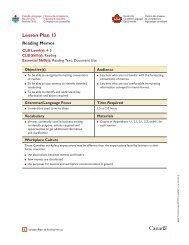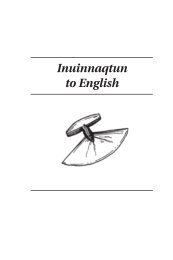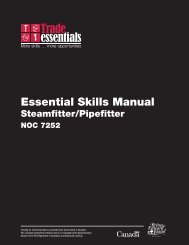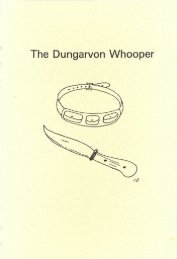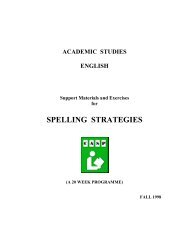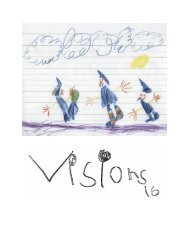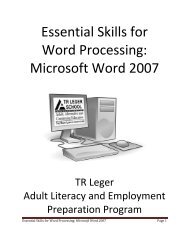Integrating Essential Skills into Training - National Adult Literacy ...
Integrating Essential Skills into Training - National Adult Literacy ...
Integrating Essential Skills into Training - National Adult Literacy ...
You also want an ePaper? Increase the reach of your titles
YUMPU automatically turns print PDFs into web optimized ePapers that Google loves.
SKILLBUILDER – FLOWCHARTING<br />
A flowchart shows a sequence of steps in a process. It sometimes indicates the amount of time each<br />
step should take. Flowcharts are an easy-to-read format for procedures that have many steps. They give<br />
us a “big picture” view. Usually the flowchart starts at the top of the page and works its way down the<br />
page. Text is short and to the point. Many abbreviations are used. A label or title explains the process<br />
being described.<br />
How to read basic flowcharts<br />
Start / Stop<br />
A circle or rounded off rectange usually means the start or end of a process. The “start”<br />
refers to an action which “kicks off” the process. The “stop” means the final product or<br />
outcome.<br />
Step / Task<br />
A rectangle means a step or a task. Variations in rectangles can mean sub-steps or subprocesses.<br />
( )<br />
Process Flow<br />
Arrows indicate the direction of the process. Only one arrow leads to the next step. Several<br />
arrows can go to the same activity box. The boxes in a flowchart are like nouns and the<br />
arrows are like the verbs directing the action.<br />
Decision Point<br />
This means a question is asked and a decision must be made. There are different processes<br />
depending on the answer. Usually the possible answers are Yes or No.<br />
How can flowcharts be used in a training situation?<br />
• to reinforce or assess a trainee’s understanding by having the trainee flowchart the process or<br />
procedure<br />
• to teach a process or procedure to trainees by presenting the concepts via a flowchart (e.g. how<br />
to make a product, how to operate a machine, what to do if there is an emergency, the steps in<br />
making a sale to a customer, etc.)<br />
• to organize production and assign tasksto show the “big picture” – an entire process at a glance<br />
• to address the use of symbols (rectangles, arrows, etc.)to<br />
teach industry-specific terminology / abbreviations<br />
• to teach reading – flowcharts use few words<br />
• to explain a process to someone with low literacy – use<br />
pictures instead of words<br />
• to teach decision making processes<br />
How to grow<br />
mushrooms




